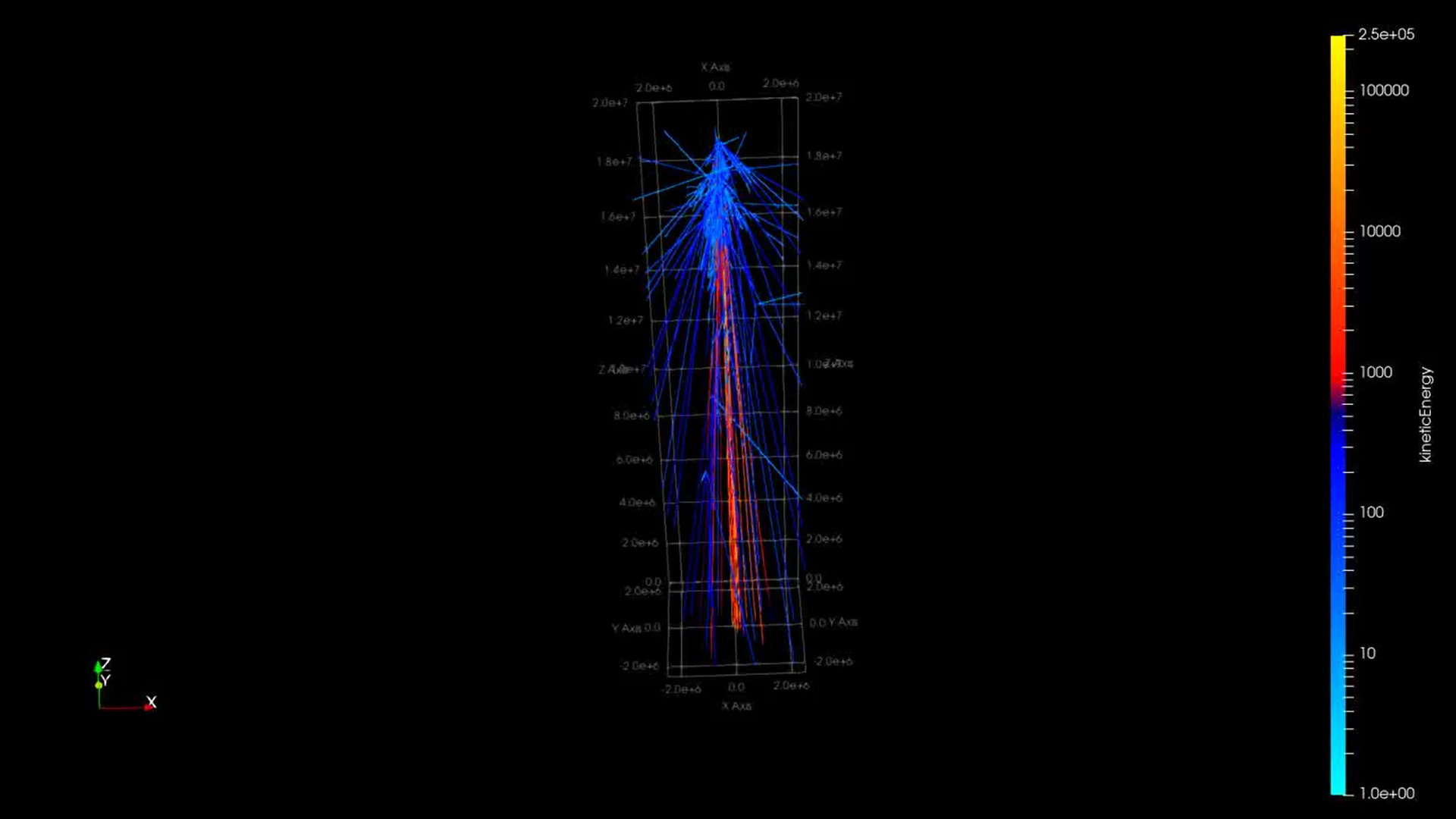Extensive air showers
The balloon flight executed by Victor Hess in August of 1912 became a historic achievement that opened a new window of possibilities for the understanding of matter in our universe. When climbing an altitude of 5300 meters, Victor Hess measured the ionization tax in the atmosphere and verified that it increased around 3 times in comparison to its measure at sea level. He then concluded that the penetrating radiation in the atmosphere had its origin in space. He had discovered the cosmic rays.
These high-energy particles that come from outer space are especially (89%) protons - hydrogen nuclei, the lightest element and the most common one in the universe -, but they can also be helium nuclei (10%), and heavier nuclei (1%) - even uranium. When arriving on Earth, these particles collide with superior atmospheric atomic nuclei, generating more particles, especially píons. The loaded píons quickly decay, emitting muons. Unlike píons, the muons can not strongly interact with matter and can travel through the atmosphere - even penetrate the ground. The muon tax that arrives at Earth's surface is such that, approximately, each second a muon passes through a volume equivalent to the size of a person’s head. Muons are second-generation leptons in the Standard Model, and, as such, they act exactly like an electron. The only difference is its mass. Muons are more massive than electrons (~200 times). Adapted from Science at CERN - Cosmic rays: particles from outer space
The neutral pions decay almost immediately in high-energy photons (&\gamma$). High-energy photons colliding with atomic nuclei can create electron-positron pairs. Electrons and protons interacting with loaded nuclei produce the so-called brehmstrahlung photons that, on the other hand, can create pairs, and so on. When the primary cosmic ray particle's energy is too high, electrons, protons, and photons in the form of a cascade can reach the ground.
An extensive air shower, if formed from a primary proton of eV, will produce around particles on the surface, composed of approximately 80% of photos, 18% of electrons/positrons, 1.7% of muons, and 0.3% of hadrons - as shown in the following figure.
